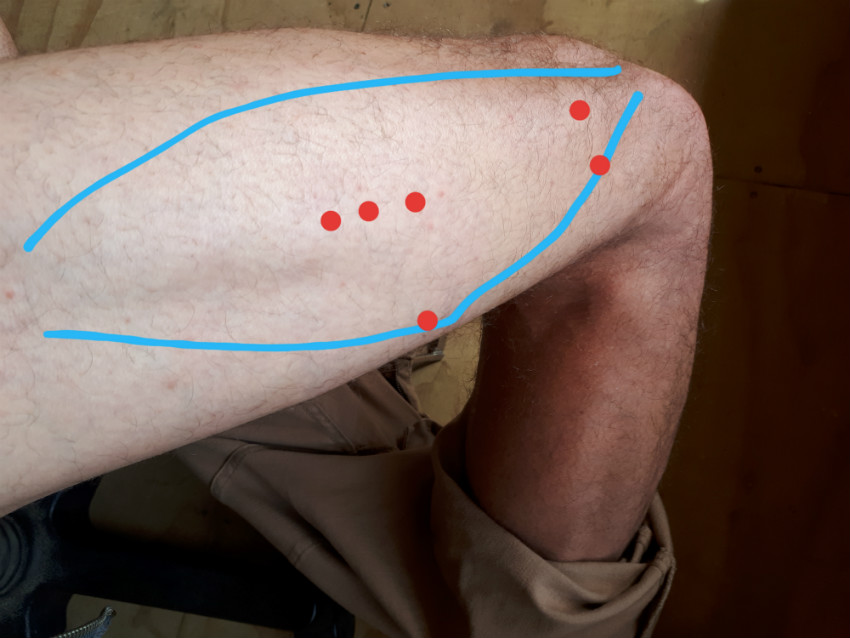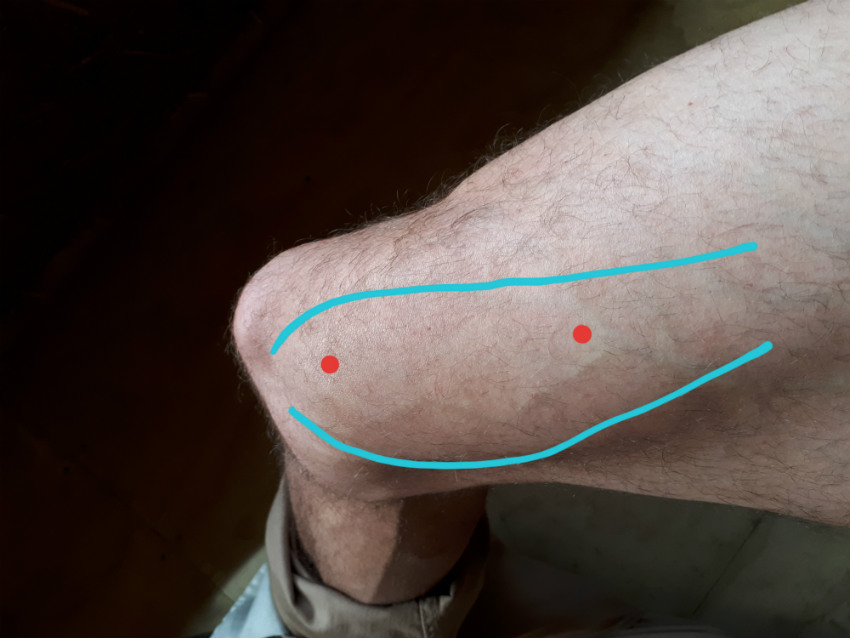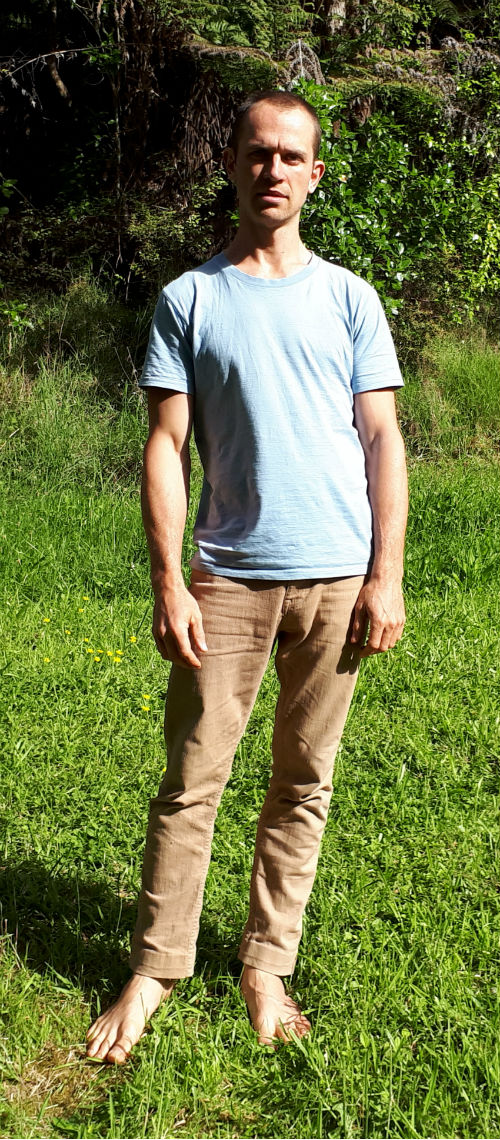How To Help Side Knee Pain
I used to experience a lot of pain on the inside of my knee... In fact, I had chronic pain in many parts of my knee. But the inside was particularly bad. It was so depressing. The knee pain had been there for such a long time and any efforts I made to help it either didn't work or didn't last. I was starting to think I would be in pain forever.
It got so bad at one point that I couldn't even walk anymore. My knee swelled up really big and it was extremely painful to bend it even slightly. At the time, I didn't know what to do to get any relief.
Fast forward 5 years and my knee's are pain free and healthy. Welllll, mostly healthy. I did bear some permanent damage to my knee-cap because my knee was misaligned for a long time. But, the damage is minor and it acts as a reminder to not tolerate discomfort anymore.
Getting to this place of health and easy movement has been a huge journey for me. My hope is that I can share the most important parts of it so that you don't have to suffer for as long as I did. If you're struggling with ongoing knee pain, read on and absorb my biggest lessons...
First Aid For Your Knee Pain - Trigger Point Therapy
When I first started treating my knee pain, I discovered something called myofascial trigger point therapy. I thought that this was my ticket back to health. The book I read was full of amazing stories of people who had massaged themselves out of pain.
And the amazing thing was, it actually worked...
One of the main premises of trigger point therapy is that there's these tiny little "knots" within muscle fibres (known as trigger points). These trigger points can send or refer pain to other area's of your body.
In the case of knee pain, it usually comes from trigger points in your quadriceps muscles, your adductors and your calves.
For out-side knee pain there's probably trigger points in the vastus lateralis muscle
For in-side knee pain there's probably trigger points in the vastus medialis or one of your adductor muscles.
Here's a photo of me with my pants down. Don't run away though, I'm showing you something useful.

Those red dots are the rough positions of common trigger points which send pain to your outer knee. You can dig around with your thumb or fingers until you find places which are really painful. When you push them you might even feel the pain being referred to your sore bits. This is a good thing, because it means you've found the right trigger point!
Guidelines would be to "iron out" the trigger point with a tennis ball or roller, about 10 strokes 3-4 times per day.
And here's a picture of common vastus medialis trigger points for inner knee pain.

Again, you could dig around until you find a sore point and keep massaging it. The advice would be to explore with your fingers or your elbow along your inner thigh and rub out those tender little bastards.
My trigger point book was my best friend for a time. If I had pain, I would consult the pain maps, find the trigger point, hunt it down and eliminate it. I even got downright nerdy with it and setup a spreadsheet so that I could massage all my personal trigger points methodically.
And my pain would dissolve sometimes within 30 seconds!
However, the relief never lasted. The massage was an ongoing battle that I was losing. The pain was continuing to get worse over time.
That's why I call this stuff "first aid". It's useful to apply if you just need immediate relief. And in some cases for some people, it's all they need. So it's worth trying.
But just know that there's probably something deeper which is driving the pain.
A Long Term Approach To Moving Through Pain
Here's a potent truth which made all the difference to my pain:- The tension, pain and trigger points were all driven by my HABITS OF MOVEMENT.
That changes everything.
This type of thinking comes from a modality known as The Feldenkrais Method ®. It's a method I discovered which had profound impacts on my way of approaching my body. I decided it was so important that I invested in a 4 year professional training and now teach it myself.
The feldenkrais method deals with habits in our movement and our nervous system.
The reason my trigger point massage never worked for long was because my movement habits were just re-establishing the trigger points. It was actually a never ending battle.
One of the reasons (there were many reasons) I had so much knee pain was because of the habitual way that I used my hip joint. I was always throwing my hip out to the side as a strategy for balancing. If you want to know more about that, read these case studies. Check out the photo below showing how I used to stand.

This way of moving meant that my leg muscles had to work so much harder. The poor things basically had to take over the work that my mis-aligned skeleton wasn't doing. It's not surprising they got tight and started causing damage over time. Day-in, day-out, this pattern eventually became too much and my brain started generating pain signals to protect my knee.
Now that I've had a lot of training in observing people's movement, I see this type of thing everywhere. I see a man walk down the beach and his torso is leaning off to the right. Another lady walking her dog is perpetually folded and bends forward at the hips. Still other's shuffle along and have a spine that is held almost completely immobile.
We all have habitual patterns of movement like these. Some of them are really quirky and obvious, others are more subtle.
In some cases our movement patterns serve us well. In other cases, they can make life difficult. Most of the time, the patterns are unconscious. We don't even know we're folded, or bent or twisted because it's how we live our life. It just feels normal.
Take a look next time you're in public, you'll see it's true.
How to change your movement habits
If you're suffering from chronic pain in your knee's I can almost guarantee that you'll have movement habits contributing to it.
The question now becomes, what can we do about it?
Well, the first step is awareness.
In order to change anything, you need to first become aware of what you're already doing.
You can do this in your day-to-day life by asking questions like these...
- When does your knee get sore? Is it after a certain activity? Is it when you get out of bed? Get specific... is it really "all the time?" or are there times when it's not actually there, even for a moment.
- Is there anything that makes it feel better?
- Is there anything that makes it feel particularly bad?
- Do specific movements make it hurt?
Awareness about some of these answers can help to steer you away from some really obvious things which might be hurting you.
In some cases, this may be all that's required. But in most cases, it's likely that your habits will require some deeper examination.
This is where Awareness Through Movement ®(ATM) lessons can help. ATM lessons are a way to deeply explore your habits of movement and to rewrite those habits to be more efficient. There are hundreds of different lessons which can help you rewrite your movement patterns to feel easier and more enjoyable.
These are the primary way I look after and most importantly, keep improving, my movement.
The lessons are usually done lying on the floor. (This positively influences your nervous system and makes it easier to change your muscular habits) They are slow and gentle and will train you over time to move in a way that doesn't cause pain anymore.
If you would like to try an ATM lesson, you can sign up to my newsletter and I'll give you access to a free recording
Keep in mind that this is a start. I cannot know or guarantee that this is going to get you out of pain immediately. But is a beginning of an exploration that is deep and worthwhile and will over time help you learn to move without pain again.
If you find this useful and you would like to explore more, there are several ways to proceed.
1. I teach weekly ATM classes in West Auckland, NZ. If you are local, then this is a great way to continually deepen your learning and improvement of the way you move.
2. I have audio recordings available for download. I have a package which is focussed around knee and ankle health. I did not record these lessons, but I have tried them, listened to them and highly recommend them. If you're interested in exploring them, send me a message
3. Again, if you are local, I offer one-on-one sessions which is a really great way to help improve your movement in a more targetted way. While ATM lessons are a great practice, it is often useful to have targetted bodywork to help you get on top of things sooner.
Whatever you decide to do, please at least know that you're not stuck with your pain forever. There IS a way forward. I remember the worst part about my experience was the thought that the pain would NEVER change. Trust me, it can.
I have seen many of my colleagues, students and clients learn how to move again without pain. It just takes time, practice and...
...learning - something you were born to do!